There was a lot of Google news this week, but there was something else. For example, Samsung found itself at the center of a scandal that forced them to urgently make changes to their smartphones' software. Of course, this has happened before, but this time the situation is a little special, first of all, by its nature. There were other scandals, in particular with Chinese companies, which found a good reason to fight with Google itself. And she herself was noted for new products. And the coronavirus has made its own adjustments to the release schedule of new products. This is not all that the outgoing week was remembered for. Let's discuss this and other news in our traditional weekly edition.
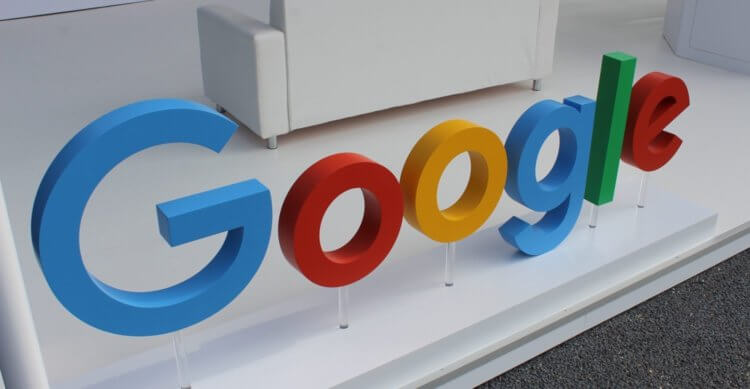
There was a lot of Google-related news this week.
Chinese companies decide to go to war with Google
The US government banned Google from providing Huawei its own services in May 2019. This led to the fact that, in new smartphones Huawei, many applications of the American giant no longer use. The scandal between Huawei and the US government meant abandoning the most important thing – Google Play. Many were waiting for the consequences of these actions, but they became noticeable already in the fourth quarter of 2019. Then the shipments of smartphones Huawei fell by 7%, and this is a surprisingly strong drop against the background of constant growth in the past.
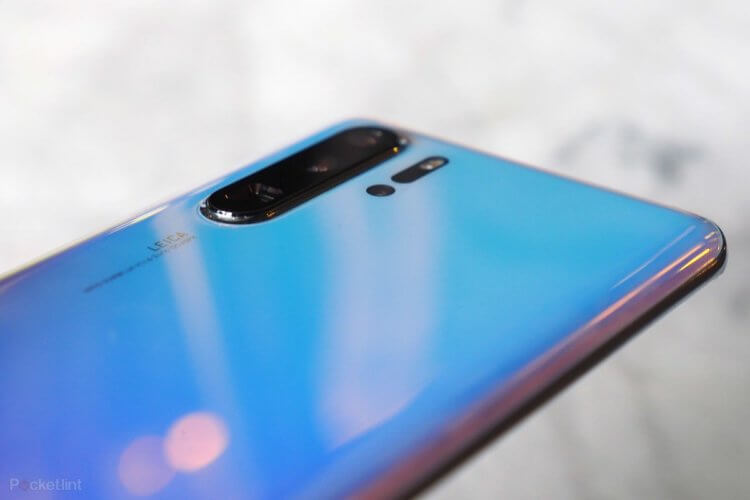
Chinese companies have declared war on Google?
After the refusal of services, Google Huawei officially announced that it would never return the applications of the American giant to its own devices again, even if Google agrees to such an adventure. Probably, Huawei is seriously outraged that an open war was started against her, however, declaring this, of course, the leadership of the Chinese giant is thinking about the future. The company hopes that the global market can exist without Google Play.
Huawei offers its own services, for example, the AppGallery app store (not so long ago, the company started paying developers to publish apps in this store), which should become a worthy replacement for Google Play. However, so far these are just words, because there are only 15 thousand applications in the store Huawei, while there are millions of them on Google Play.
All would be fine, but other Chinese manufacturers come into play: Xiaomi, Oppo and Vivo. The companies, along with Huawei, have become part of the Global Developer Service Alliance (GDSA), as reported by Reuters. The alliance will aim to create a platform for simplified publishing of games, music, films and other applications to the stores of these brands. They took this step in order to overcome the monopoly on the market in the face of Google with its services. It's amazing how another company can lose billions of dollars to the actions of one company. And this certainly needs to be prevented, as the leaders of large Chinese companies are well aware.
GDSA is slated to launch in March this year, and the alliance's prototype site says the platform will cover nine regions, including India, Indonesia and Russia.
In 2019, Google earned $ 8.8 billion on its own services from the 30% commission it takes on every purchase. And this certainly shouldn't please app developers. At least, this is what the alliance members hope for, who will certainly offer them a lower percentage. For example, in AppGallery, the commission is only 15% – that's half what Google asks.
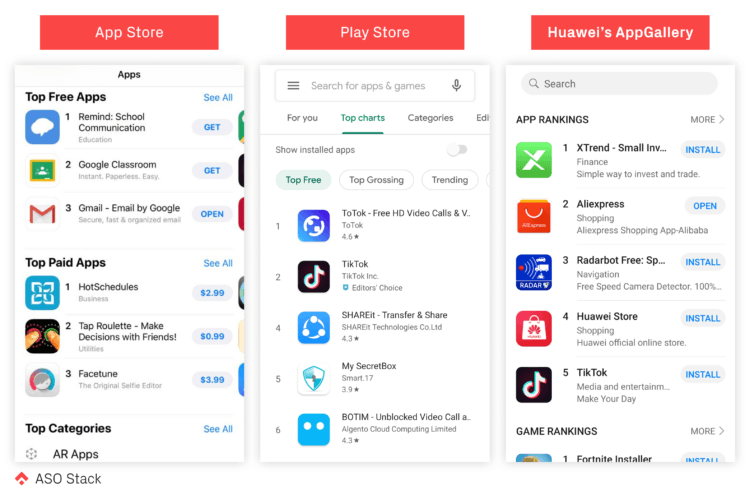
AppSore vs Play Store vs AppGallery
It is also interesting that in total, these four companies account for 40.1% of global smartphone shipments in the fourth quarter of 2019.
Huawei, in addition to the AppGallery app store, may in the future offer its users a full-fledged HarmonyOS operating system with a microkernel. The presence of a small core and modular architecture will allow Huawei to use this system in many different devices: refrigerators, smartphones, smart watches, light bulbs, cars, computers.
What could be the problem? And they really can arise, because the alliance, as a rule, requires investment and leadership. Which company will invest the most and which will have the most influence on various issues? This is still a mystery.
It is interesting to know what our readers think about this. Share your opinion in the comments and don't forget about our Telegram chat. It seems that such steps are always good, because in this case the market offers great competition, namely, in it more favorable offers are born.
For example, everyone knows how the Fortnite developers decided not to release the application on Google Play due to the too high commission, and, obviously, they did not lose, because the game is still played by millions of people around the world.
Google unveils massive Google Maps update
Many services that we use today can easily claim to be called a part of our life. After all, do not be at hand, it is difficult to imagine how we would manage without them at all. Take the same Google with which we find the information we need. At some point, he even inspired many of us that there is no need to read books, if you can take and find all this on the Internet at any time. This process even has its own term – google. However, on one search engine alone, the world has not converged like a wedge, because there is also Google Maps.

Google Maps received an update in honor of its 15th anniversary
Believe it or not, Google Maps turns 15 this week. Google launched it in February 2005, when many probably didn't have the internet yet. During this time, Google Maps has developed to such an extent that today it is considered the standard of a mapping service, which competitors like Apple Maps, TomTom or OpenStreetMap are not even suitable for. To reaffirm the superiority of its product, Google has released a major anniversary update that includes a redesign and several new features.

First of all, you should pay attention to the logo of the Google Maps application for Android, which now looks different than before. Google redrawn it from scratch, removing the intersection of routes in the background and leaving only a pin, which is usually used to indicate a specific location. True, now it is not painted in red, but in Google's corporate colors (red, blue, blue, yellow and green). It is unlikely that this will play any meaning for users, but in this way the developers emphasized the importance of the update.
The interior design of Google Maps has also undergone changes. Now, at the bottom of the screen, to the 'What's Nearby?', 'Regularly' tabs, 'News' has been added to find reviews of establishments and advice from local experts on where to visit, and 'Add', which allows you to add places that are not on the map. pictures and other data. And instead of the 'For you' option, the 'Saved' option appeared. The result is no longer a cartographic service, but a real platform that provides the ability to quickly and conveniently explore familiar and unfamiliar places.

Google redesigned the Google Maps interface
However, Google didn't stop there. The developers of the company, given the importance of public transport for most regions, decided to expand the function of its tracking. Google Maps will now announce occupancy rates to give people an idea of which mode of transport is best to use at the moment, as well as the internal microclimate. This way, users will be able to understand what is better to wear before going out, depending on where they are going and how much time they will spend in transport, which can be both hot and cold. This and many other data will be formed on the basis of feedback from users themselves, by analogy with information about traffic jams, speed limits, etc.

Google Maps is no longer a mapping service, but a complete platform for exploring the world
Well, and, of course, the Live View function, which appeared in Google Maps in 2019 and was intended to help in orientation by indicating directions in AR, did not go unnoticed. True, the matter was limited to only one attention. The developers have promised to continue improving this feature in the future, starting to test new features over the next few months. However, what exactly these features will be and when they will appear in the release version of Google Maps, it was not said.
Download Google Maps update
Google spotted the new operating system Pigweed
Google has many projects that users don't know about. Some of them are simply not popular, and some are kept secret by the company itself. However, the point here is not that the search giant wants to make a secret out of this, but in the banal unwillingness to talk about an unprepared product ahead of time. After all, in the end, it may not work out, and then one would have to explain why the announced novelty was frozen or canceled altogether, as was the case with the AirPower wireless charging station from Apple. Another thing is that sometimes even Google is unable to hide the existence of a new project, which immediately becomes public knowledge.
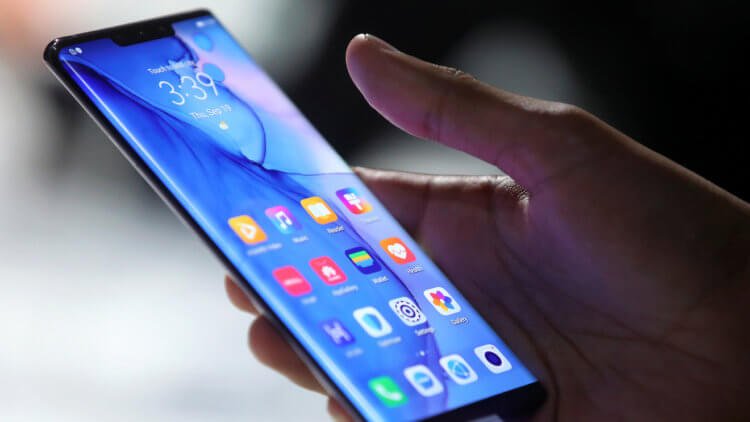
Apparently, Google is working on a project for a new operating system.
Google has applied to register the Pigweed trademark. According to information from the database of the US Patent and Trademark Office, the new brand of the search giant extends to operating systems and computer software. It would seem, what's wrong with that? After all, technology companies quite often register new trademarks and patents just in reserve, even without having any plans for them. However, in the case of Pigweed, things turned out to be somewhat different.

Pigweed is a new operating system from Google about which almost nothing is known yet
Despite the fact that the first public mention of Pigweed came precisely from the filing of the US Patent and Trademark Office, a more detailed analysis showed that this is not entirely true. As it turned out, references to the new project are also contained in the Fuchsia operating system, which Google, due to its versatility, uses to test and debug innovations for existing platforms. For example, on the basis of Fuchsia, the company's developers tested many functions Android before bringing them to life in the release version.
In addition, Pigweed already has its own development team that is not part of the company's staff. They are testing it using bug tracking systems like Gerrit and Monorail. From this we can conclude that if the new operating system is not yet ready for release, then at least it has a physical embodiment, which has bugs and its own set of functions. After all, you see, if it were a project described only on paper, then there would obviously be nothing to edit and test.
It is not yet very clear what exactly Pigweed is. On the one hand, it is already known that this is an operating system, but, on the other hand, there is no understanding of what purpose it will serve, what set of functions it will have and, most importantly, when it will be released and whether it will be released at all. After all, as we remember, Google already has a Fuchsia project, which turned out to be not a successor to Android and Chrome OS, but just a testing ground for testing new functions. Therefore, there is no guarantee that Pigweed is not the next iteration of Fuchsia, but a commercial platform.
However, if you use your brains, you can come up with the purpose of Pigweed pretty quickly. Despite the fact that Google has operating systems for smartphones, watches and computers right now, Pigweed may well combine them into one whole. Is it necessary from a practical point of view? In my opinion, yes. In the end, it was not for nothing that Huawei made its HarmonyOS universal, because in this way it will be easier to develop and maintain it without being sprayed on several independent projects at once.
Smartphone manufacturers began to cancel the release of new products due to coronavirus
Coronavirus is a serious problem not only for the smartphone market, but, in general, for the whole world today. This is especially true for the economies of all countries and, in particular, China. The new coronavirus first began to spread in December 2019 in the Chinese city of Wuhan, when an outbreak of pneumonia caused by a previously unknown type of virus was recorded. The first cases were visitors to the seafood market, and later the coronavirus mutated and began to spread from person to person. Currently, the number of cases of coronavirus reaches almost 40,000, and the death toll is close to 1,000. These are quite serious numbers that frighten the whole world. The smartphone market could be seriously affected by the coronavirus. You can track the spread of the virus on the coronavirus.zone website.

Manufacturers began to cancel the release of new products due to coronavirus
Earlier, the company Xiaomi decided to cancel the presentation of the Mi 10 due to the new coronavirus, a representative Xiaomi said. He said that instead of the usual presentation, the company will hold an online event, in simple words, they will offer us an online broadcast, or simply present the product in finished form. The head of the company Black Shark, which is a subsidiary of Xiaomi, said that it was impossible to hold a press conference today due to the epidemic. Nobody wants to risk people's lives. In addition, Xiaomi, presenting Mi 10 as an online broadcast, plans to save a lot of money on renting premises. The release of Mi 10 was scheduled for February 10, but what will please Black Shark is not yet reported. In addition, there was information that the company may cancel its next presentation Honor. It is reported that in 2020 Huawei will present its smartphones in online format. And not so long ago, partners of smartphone manufacturers in Russia announced that due to the coronavirus, supplies of some Chinese devices were stopped, and we are talking about Huawei, Xiaomi, Redmi, ZTE and Lenovo.
However, this is not the only thing that may upset fans of the gadget market, because LG and ZTE have announced that they will cancel their presentations at MWC this year. The Mobile World Congress is a worldwide conference where every year manufacturers from all over the world showcase new products in the world of gadgets. The news that ZTE and LG would not be attending the exhibition came out not too long ago, but almost immediately after that, ZTE reacted to this information, which came from VentireBeat. She stated in Twitter that she will still visit MWC and present various 5G – devices. Probably, there were disputes within the company on this topic, and the source received information that at that time was not yet final, but it is possible that ZTE could merge information that it will not go to the exhibition to see the reaction of the market and fans . But who really can not go is LG, which announced the cancellation of all its events in Barcelona during the MWC exhibition.
The GSM association, which is the organizer of the MWC, is not aloof either. The guys declare that they will take all additional measures to protect the exhibitors. They will offer various medical equipment, medicines, and this year the exhibition will have a policy of no handshakes and a change of microphones according to the protocol. Such an attitude towards exhibitions is a rather serious issue, because today the majority of manufacturers are Chinese who come from China. And the issue of safety in this case comes first.
It is also worth noting that the usual hype around the new coronavirus is not excluded, because 24,000 people is not such a big number against the background of 1 billion people living in China. In addition, China itself controls the situation quite well and restricts visits to various cities infected with the virus. Scientists are currently developing an antiviral drug that would cure people with the new coronavirus. In Russia, not so long ago they announced that they are working on the withdrawal of a strain of a new virus thanks to two infected who came from China to Russia.
The situation is, of course, interesting, and so far there have been no cases of coronavirus infection through parcels (not so long ago we wrote material about whether a virus could get into a parcel from China), but as soon as this happens, perhaps many manufacturers will simply stop producing devices or additional measures will be introduced. However, so far, the virus is not transmitted through various packages of smartphones, so there is no need to worry too much about the sales of certain gadgets. And here, rather, the question concerns Apple, it delegated the production of smartphones to Chinese manufacturers. This also applies to Samsung, it outsource cheap phones to other manufacturers, and it is possible that Chinese companies may be among them. I propose to discuss this in Telegram.
Samsung removes memory cleaning function after major scandal
I simply can't imagine a major manufacturer paying so much attention to posts on Reddit. However, it happened. Earlier, one of the users of this social network published his small investigation, according to which Samsung used in its shell the memory cleaning function from the company 360, which sent user data to its own Chinese servers. On the day the investigation appeared on the Web, we immediately shared it with our readers and condemned Samsung for using third-party Chinese software in its firmware. And I do not exclude that, among other things, our publication could have contributed to the fact that Samsung drew attention to this problem.
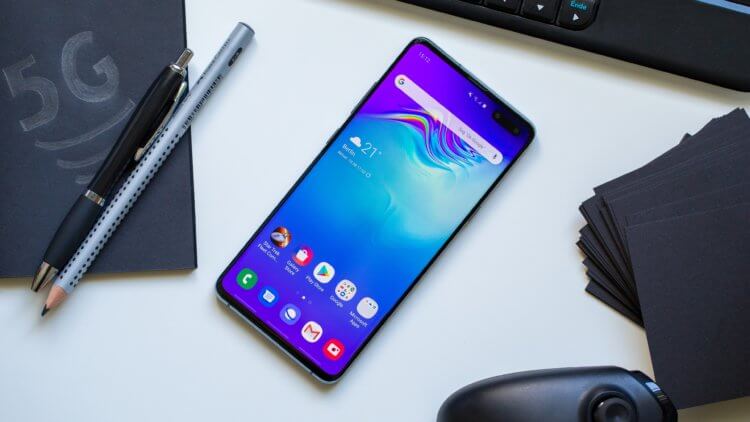
Samsung removes software from its system that sends data to China
This software was responsible for clearing the memory in the phone. The storage scanner was located in the Device Care section associated with memory management. Many manufacturers do this today. For example, on phones Xiaomi, Aavast is responsible for security, according to the company logo in the security app.
This vault scanner had the “Powered by 360” logo and sends data to Chinese servers. However, why not blame for the same Xiaomi? First, when buying a phone Xiaomi, we initially assume that the company will save on software by resorting to the help of third-party companies. Will she develop her own antivirus? Secondly, Aavast is a fairly popular company, which has not been followed by something strange, but with Qihoo 360 everything is not so simple. The fact is that in one of the interviews the head of Qihoo 360 said that the company, if necessary, will transfer data to the Chinese government. In addition, Qihoo 360 was not playing a fair game in the antivirus market in China.
However, everything has changed, because in the latest update to Android 10 Samsung removed the memory cleaning function of Qihoo 360. The new update adds support for Android 10, improved autonomy and fixes for several bugs. Probably, Samsung considered the presence of 360 software to be a bug. By the way, not so long ago Samsung postponed the release Android 10 for some smartphones.

Samsung removes software from 360 that sent data to Chinese servers
It's amazing that such a large company is capable of reacting so quickly even to one post on social media. Yes, it has become highly discussed, Samsung, obviously, was condemned for using such software, but the Koreans care about their own audience, and therefore they decided to get rid of the software of this company, for which they are certainly worth respecting.
The author of the new publication examined the APK file of the Device Care application and did not find any traces of Qihoo 360 there.
Users in the comments confirm that the “Powered by 360” logo has disappeared after receiving the new update. Even the owners of budget A-series phones report this. If you are a fan of Samsung, you will surely be interested to know the list of the best tablets from the company.
Want to get Galaxy S20 wallpapers now? We have them! We publish a lot of news not only on the website, but also on other sites. For example, in Zen. Subscribe to us in Yandex!
